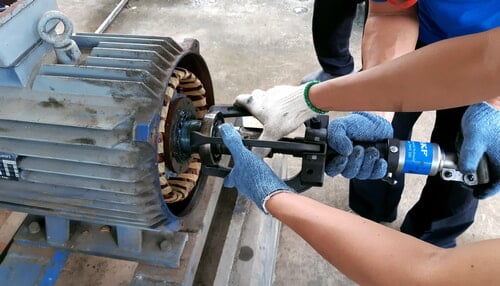Hand Tools

Safety Tips for Using Pullers: Ensuring Secure and Injury-Free Operations
Introduction:
Pullers are versatile tools that remove or extract objects, such as gears, pulleys, bearings, or bushings, from a tight fit. While pullers are efficient and powerful, it is crucial to prioritize safety to prevent accidents or injuries. This article provides safety tips for using pullers, ensuring safe and effective extraction operations.
Wear Personal Protective Equipment (PPE):
Prioritize personal safety by wearing the appropriate personal protective equipment (PPE). Safety glasses or goggles protect your eyes from flying debris, while gloves safeguard your hands from sharp edges or pinch points. Consider wearing additional protective gear such as earplugs or earmuffs, a dust mask, or a helmet depending on the task and work environment.
Choose the Right Puller for the Job:
Select the appropriate puller based on the object you need to extract and the specific application. Pullers come in various sizes, types, and designs to suit different tasks. Ensure that the puller you choose matches the dimensions and specifications of your working object. Using an ill-fitting or incorrect puller can result in reduced efficiency, damage to the object, or even a safety hazard.
Inspect the Puller and Object:
Before using a puller, thoroughly inspect both the tool and the object you are working on. Check the puller for any signs of damage, wear, or deformation. Ensure that the jaws or hooks of the puller are in good condition and free from defects. Inspect the object for any cracks, deformations, or signs of instability that could affect the extraction process or compromise safety.
Familiarize Yourself with the Puller Operation:
Read and understand the manufacturer’s instructions and guidelines for operating the specific puller you are using. Familiarize yourself with the various components, mechanisms, and adjustments of the puller. Understand the proper setup and alignment of the puller to ensure safe and effective extraction.
Position the Puller Correctly:
Position the puller correctly on the object to ensure maximum efficiency and safety. Align the jaws or hooks securely around the object, ensuring they engage evenly and firmly. Ensure the puller is centered and properly seated on the object to avoid any lateral forces or misalignment during extraction.
Apply Force Gradually and Equally:
Do so gradually and evenly when applying force with the puller. Use a controlled and measured approach to prevent sudden shifts or slips that could cause accidents or damage to the object. Apply force straight and directly, avoiding any excessive or unnecessary force that could lead to unexpected failures or safety hazards.
Use Auxiliary Tools for Assistance:
For particularly stubborn or challenging extractions, consider using auxiliary tools or methods to assist the puller. Lubricants, heat application, or gentle tapping with a hammer can help loosen the object and facilitate easier extraction. Always exercise caution and follow proper techniques when using additional tools with the puller.
Secure the Object and Work Area:
Ensure that the object being extracted and the work area are securely stabilized. Use clamps or other methods to prevent movement or shifting of the object during the extraction process. Clear the work area of any debris, obstacles, or tripping hazards that could impede your movement or compromise safety.
Maintain Proper Body Positioning:
Maintain proper body positioning and posture when operating the puller. Stand with a stable stance, distributing your weight evenly. Keep your body balanced and avoid overreaching or leaning excessively during the extraction process. Maintain a clear view of the operation and be prepared to react to any unexpected movements or changes.
Store Pullers Properly:
After using a puller, store it in a designated location away from children and other tools. Keep the puller clean, free from moisture or contaminants, and store it securely to prevent damage or injuries.
Conclusion:
Following these safety tips, you can use pullers effectively and safely, ensuring successful extraction operations. Wear the necessary PPE, choose the right puller for the job, and inspect both the tool and the object. Familiarize yourself with the puller operation, position it correctly, and apply force gradually and equally. Use auxiliary tools when needed, secure the object and work area, and maintain proper body positioning. Store pullers safely to prolong their lifespan and prevent any potential hazards. By prioritizing safety, you can utilize pullers with confidence and minimize the risk of accidents or injuries.